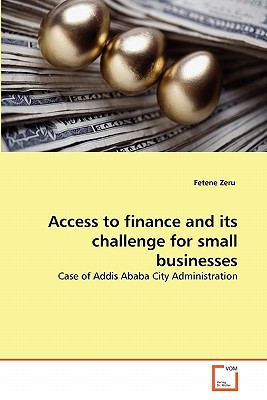Question
Perform a cost volume profit (CVP) analysis on a couple of alternatives that management is considering for implementation (details to be worked out). Download and
Perform a cost volume profit (CVP) analysis on a couple of alternatives that management is considering for implementation (details to be worked out).
Download and review the case study in the Week 4 Discussion Question [DOCX] and the Week 4 Discussion Spreadsheet [XLSX].
These two files contain the data necessary to complete the CVPs (dollar breakeven and volume breakeven) and to create the CVP graphs for each alternative.
For this discussion, you will prepare a narrated PowerPoint presentation (15 minutes in duration).
All data and discussion case study have been loaded. They are in sections so look at them carefully.
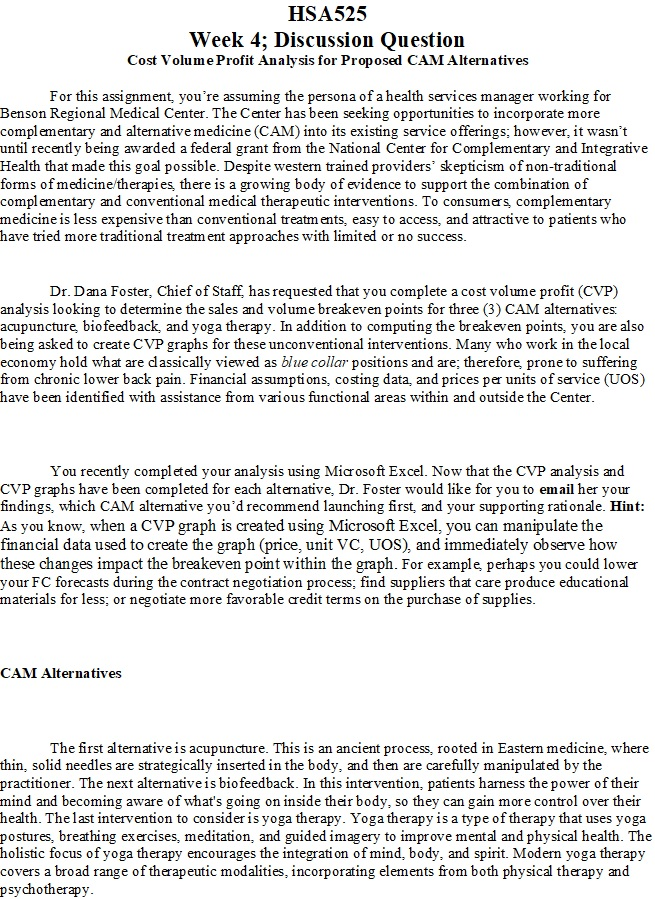
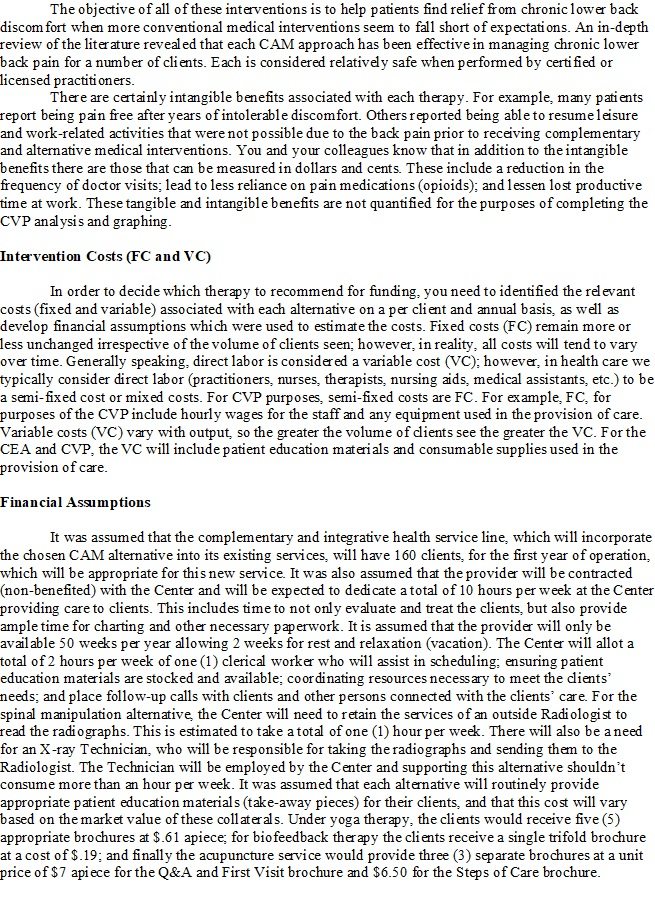
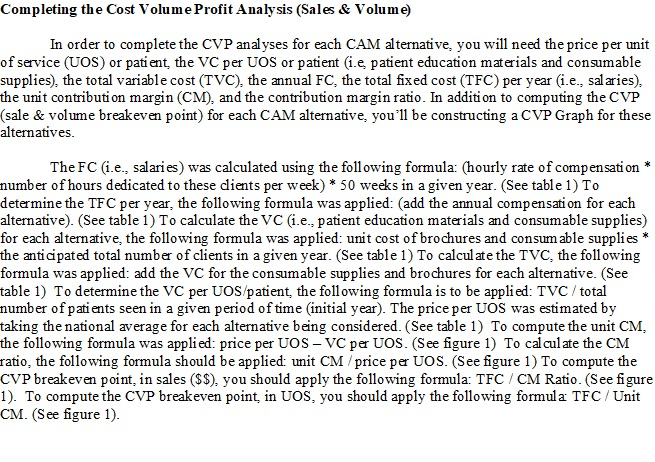
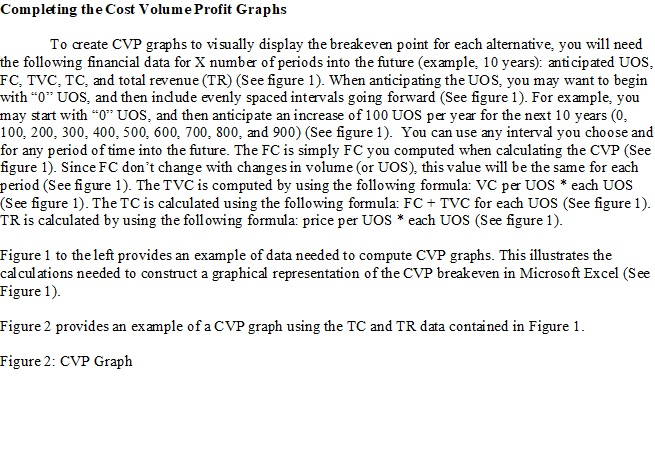
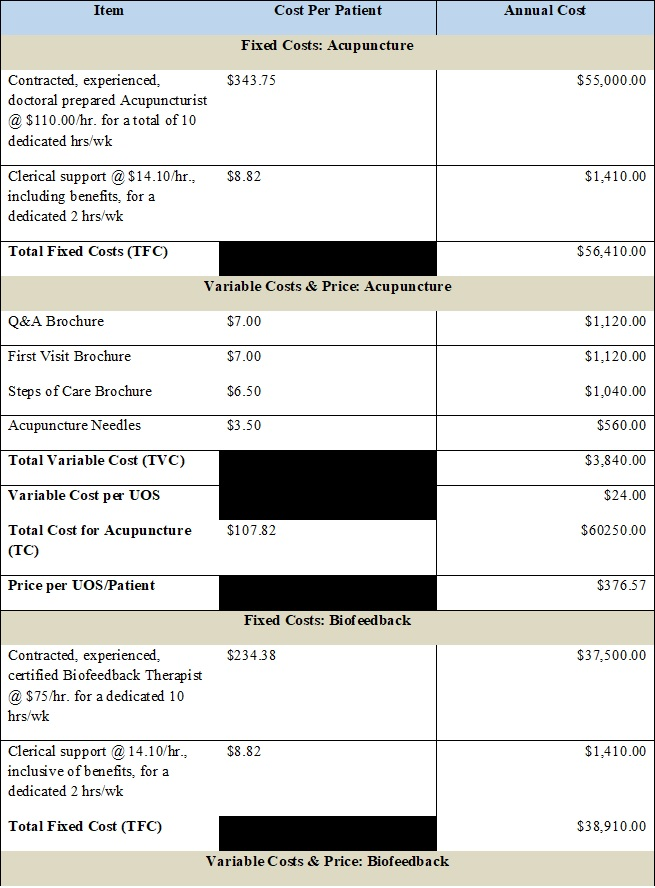
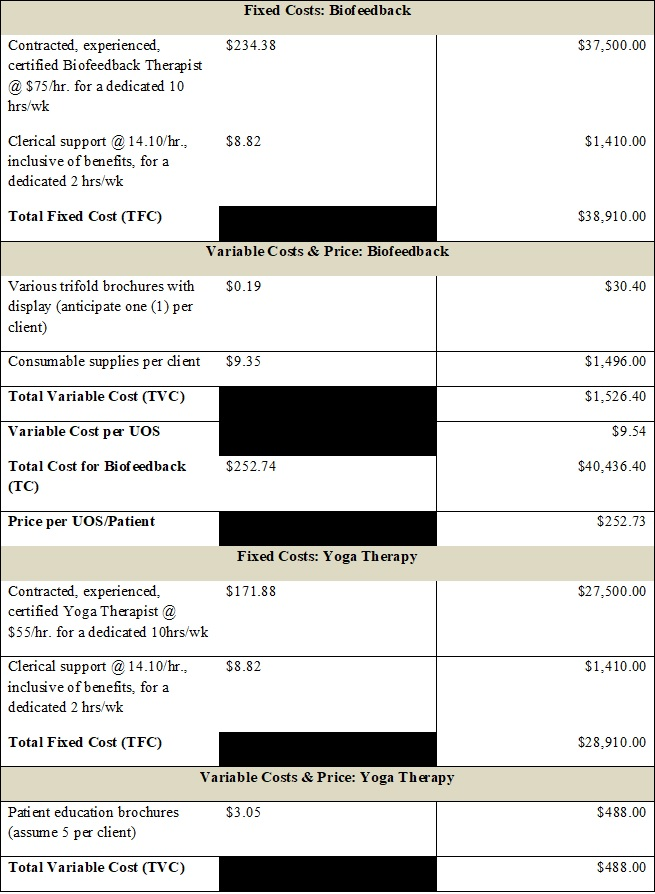

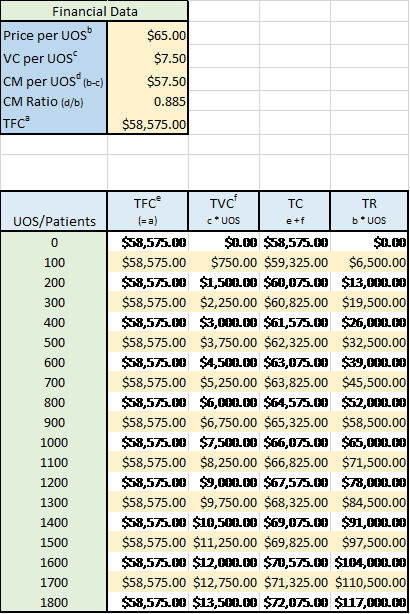
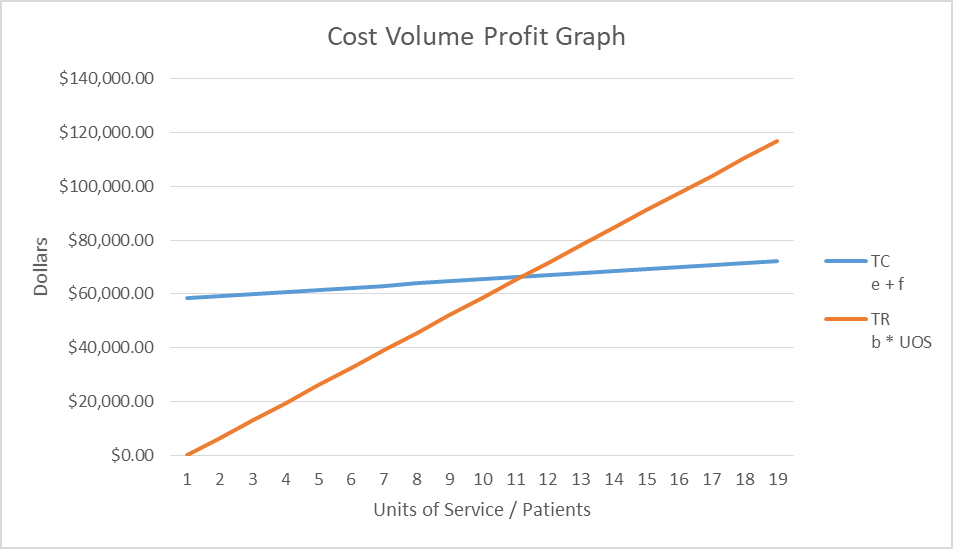
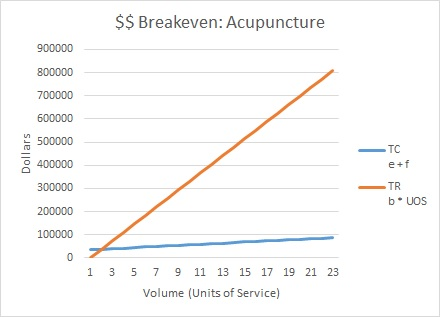
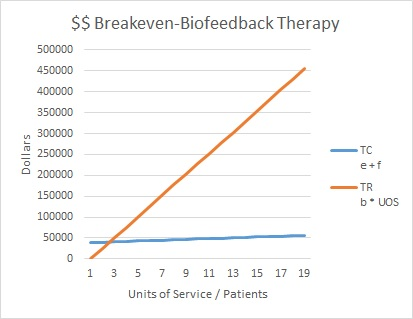
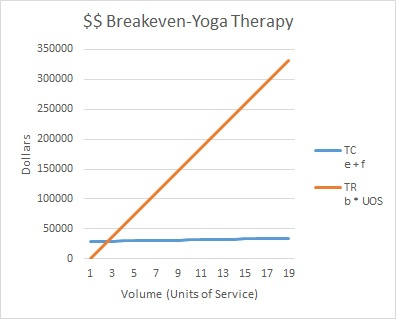

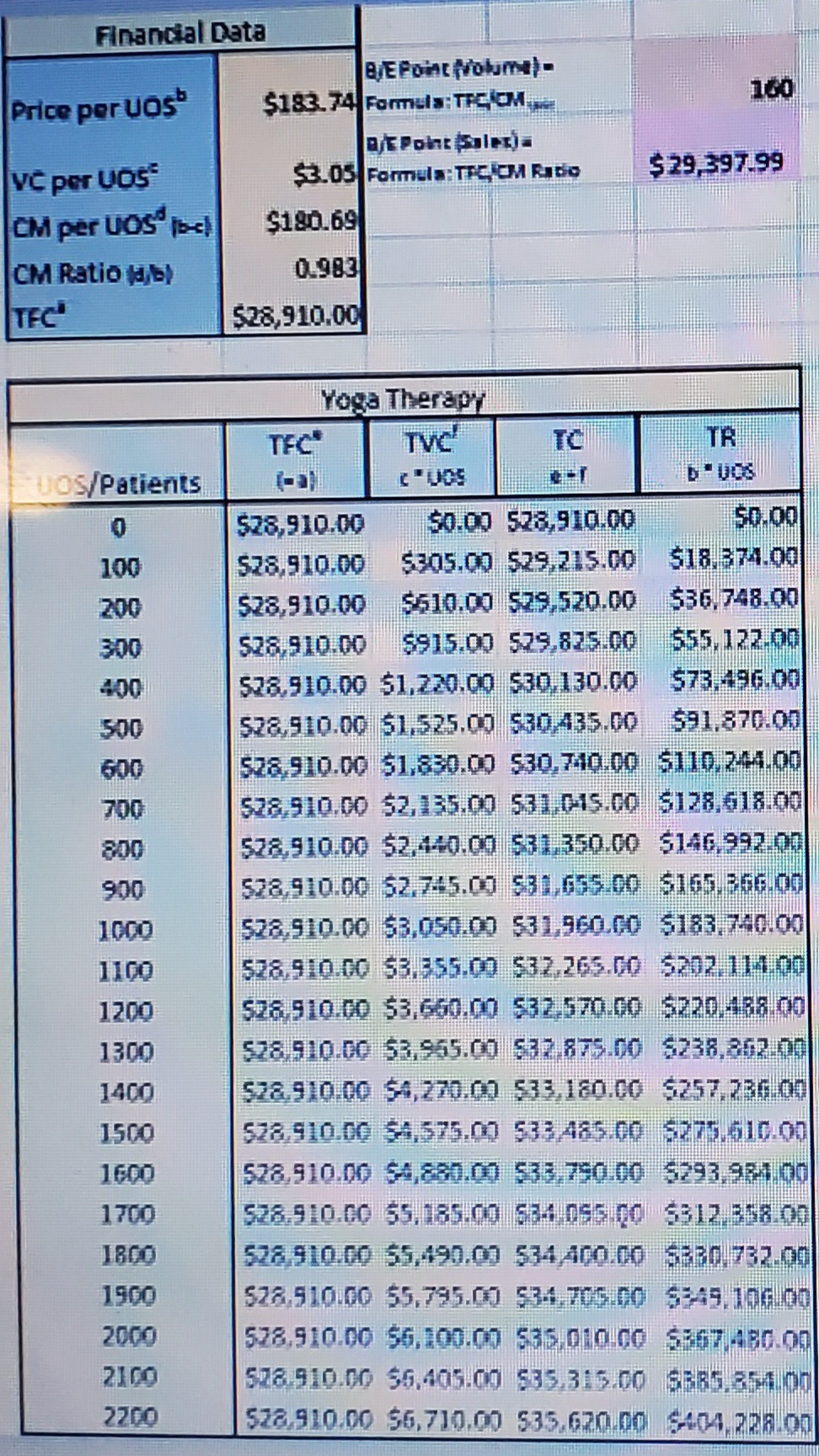
the question is the first thing you read. what isn't readable about the information. its uploaded this way because it couldn't be done any other way. please zoom the documents in and read them. unless you have a way for keep to send you the documents another way.
HSA525 Week 4; Discussion Question Cost Volume Profit Analysis for Proposed CAM Alternatives For this assignment, you're assuming the persona of a health services manager working for Benson Regional Medical Center. The Center has been seeking opportunities to incorporate more complementary and alternative medicine (CAM) into its existing service offerings, however, it wasn't until recently being awarded a federal grant from the National Center for Complementary and Integrative Health that made this goal possible. Despite western trained providers' skepticism of non-traditional forms of medicine therapies there is a growing body of evidence to support the combination of complementary and conventional medical therapeutic interventions. To consumers, complementary medicine is less expensive than conventional treatments, easy to access, and attractive to patients who have tried more traditional treatment approaches with limited or no success. Dr. Dana Foster, Chief of Staff, has requested that you complete a cost volume profit (CVP) analysis looking to determine the sales and volume break even points for three (3) CAM alternatives: acupuncture biofeedback, and yoga therapy. In addition to computing the breakeven points, you are also being asked to create CVP graphs for these unconventional interventions. Many who work in the local economy hold what are dassically viewed as blue collar positions and are therefore prone to suffering from chronic lower back pain. Financial assumptions, costing data and prices per units of service (UOS) have been identified with assistance from various functional areas within and outside the Center You recently completed your analysis using Microsoft Excel. Now that the CVP analysis and CVP graphs have been completed for each alternative, Dr. Foster would like for you to email her your findings, which CAM alternative you'd recommend launching first, and your supporting rationale. Hint: As you know, when a CVP graph is created using Microsoft Excel, you can manipulate the financial data used to create the graph (price, unit VC, UOS), and immediately observe how these changes impact the breakeven point within the graph. For example, perhaps you could lower your FC forecasts during the contract negotiation process: find suppliers that care produce educational materials for less: or negotiate more favorable credit terms on the purchase of supplies. CAM Alternatives The first alternative is acupuncture. This is an ancient process, rooted in Eastern medicine, where thin, solid needles are strategically inserted in the body, and then are carefully manipulated by the practitioner. The next alternative is biofeedback. In this intervention, patients harness the power of their mind and becoming aware of what's going on inside their body, so they can gain more control over their health. The last intervention to consider is yoga therapy. Yoga therapy is a type of therapy that uses yoga postures, breathing exercises, meditation, and guided imagery to improve mental and physical health. The holistic focus of yoga therapy encourages the integration of mind, body, and spirit. Modern yoga therapy covers a broad range of therapeutic modalities, incorporating elements from both physical therapy and psychotherapy. The objective of all of these interventions is to help patients find relief from chronic lower back discomfort when more conventional medical interventions seem to fall short of expectations. An in-depth review of the literature revealed that each CAM approach has been effective in managing chronic lower back pain for a number of clients. Each is considered relatively safe when performed by certified or licensed practitioners. There are certainly intangible benefits associated with each therapy. For example, many patients report being pain free after years of intolerable discomfort. Others reported being able to resume leisure and work-related activities that were not possible due to the back pain prior to receiving complementary and alternative medical interventions. You and your colleagues know that in addition to the intangible benefits there are those that can be measured in dollars and cents. These include a reduction in the frequency of doctor visits: lead to less reliance on pain medications (opioids), and lessen lost productive time at work. These tangible and intangible benefits are not quantified for the purposes of completing the CVP analysis and graphing. Intervention Costs (FC and VC) In order to decide which therapy to recommend for funding, you need to identified the relevant costs (fixed and variable) associated with each alternative on a per client and annual basis, as well as develop financial assumptions which were used to estimate the costs. Fixed costs (FC) remain more or less unchanged irrespective of the volume of clients seen; however, in reality, all costs will tend to vary over time. Generally speaking, direct labor is considered a variable cost (VC); however, in health care we typically consider direct labor (practitioners, nurses, therapists, nursing aids, medical assistants, etc.) to be a semi-fixed cost or mixed costs. For CVP purposes, semi-fixed costs are FC. For example, FC, for purposes of the CVP include hourly wages for the staff and any equipment used in the provision of care. Variable costs (VC) vary with output, so the greater the volume of dients see the greater the VC. For the CEA and CVP, the VC will include patient education materials and consumable supplies used in the provision of care. Financial Assumptions It was assumed that the complementary and integrative health service line, which will incorporate the chosen CAM alternative into its existing services, will have 160 clients, for the first year of operation, which will be appropriate for this new service. It was also assumed that the provider will be contracted (non-benefited) with the Center and will be expected to dedicate a total of 10 hours per week at the Center providing care to clients. This includes time to not only evaluate and treat the clients, but also provide ample time for charting and other necessary paperwork. It is assumed that the provider will only be available 50 weeks per year allowing 2 weeks for rest and relaxation vacation). The Center will allot a total of 2 hours per week of one (1) clerical worker who will assist in scheduling: ensuring patient education materials are stocked and available; coordinating resources necessary to meet the dients' needs; and place follow-up calls with clients and other persons connected with the clients' care. For the spinal manipulation alternative the Center will need to retain the services of an outside Radiologist to read the radi ographs. This is estimated to take a total of one (1) hour per week. There will also be a need for an X-ray Technician, who will be responsible for taking the radiographs and sending them to the Radiologist. The Technician will be employed by the Center and supporting this alternative shouldn't consume more than an hour per week. It was assumed that each alternative will routinely provide appropriate patient education materials (take-away pieces) for their clients, and that this cost will vary based on the market value of these collaterals. Under yoga therapy, the clients would receive five (5) appropriate brochures at $.61 apiece; for biofeedback therapy the clients receive a single trifold brochure at a cost of $.19; and finally the acupuncture service would provide three (3) separate brochures at a unit price of $ 7 apiece for the Q&A and First Visit brochure and $6.50 for the Steps of Care brochure. Completing the Cost Volume Profit Analysis (Sales & Volume) In order to complete the CVP analyses for each CAM alternative, you will need the price per unit of service (UOS) or patient, the VC per UOS or patient (i.e patient education materials and consumable supplies), the total variable cost (TVC), the annual FC, the total fixed cost (TFC) per year (i.e., salaries). the unit contribution margin (CM), and the contribution margin ratio. In addition to computing the CVP (sale & volume breakeven point) for each CAM alternative, you'll be constructing a CVP Graph for these alternatives. The FC (i.e., salaries) was calculated using the following formula: (hourly rate of compensation * number of hours dedicated to these dients per week) * 50 weeks in a given year. (See table 1) TO determine the TFC per year, the following formula was applied: (add the annual compensation for each alternative). (See table 1) To calculate the VC (i.e., patient education materials and consumable supplies) for each alternative, the following formula was applied: unit cost of brochures and consum able supplies * the anticipated total number of clients in a given year. (See table 1) To calculate the TVC, the following formula was applied: add the VC for the consumable supplies and brochures for each alternative. (See table 1) To determine the VC per UOS/patient, the following formula is to be applied: TVC /total number of patients seen in a given period of time (initial year). The price per UOS was estimated by taking the national average for each alternative being considered. (See table 1) To compute the unit CM, the following formula was applied: price per UOS-VC per UOS. (See figure 1) To calculate the CM ratio, the following formula should be applied: unit CM /price per UOS. (See figure 1) To compute the CVP breakeven point, in sales ($$), you should apply the following formula: TFC / CM Ratio. (See figure 1). To compute the CVP breakeven point, in UOS, you should apply the following formula TFC/Unit CM. (See figure 1). Completing the Cost Volume Profit Graphs To create CVP graphs to visually display the breakeven point for each alternative, you will need the following financial data for X number of periods into the future (example, 10 years): anticipated UOS, FC, TVC, TC, and total revenue (TR) (See figure 1). When anticipating the UOS, you may want to begin with "O" UOS, and then indude evenly spaced intervals going forward (See figure 1). For example, you may start with "0" UOS, and then anticipate an increase of 100 UOS per year for the next 10 years (0. 100, 200, 300, 400, 500, 600, 700, 800, and 900) (See figure 1). You can use any interval you choose and for any period of time into the future. The FC is simply FC you computed when calculating the CVP (See figure 1). Since FC don't change with changes in volume (or UOS), this value will be the same for each period (See figure 1). The TVC is computed by using the following formula: VC per UOS * each UOS (See figure 1). The TC is calculated using the following formula: FC + TVC for each UOS (See figure 1). TR is calculated by using the following formula: price per UOS * each UOS (See figure 1). Figure 1 to the left provides an example of data needed to compute CVP graphs. This illustrates the calculations needed to construct a graphical representation of the CVP break even in Microsoft Excel (See Figure 1). Figure 2 provides an example of a CVP graph using the TC and TR data contained in Figure 1. Figure 2: CVP Graph Item Cost Per Patient Annual Cost Fixed Costs: Acupuncture $343.75 $55,000.00 Contracted, experienced doctoral prepared Acupuncturist @ $110.00/hr. for a total of 10 dedicated hrs/wk $8.82 $1,410.00 Clerical support @ $14.10/hr. including benefits, for a dedicated 2 hrs/wk Total Fixed Costs (TFC) $56,410.00 Variable Costs & Price Acupuncture Q&A Brochure $7.00 $1,120.00 First Visit Brochure $7.00 $1,120.00 Steps of Care Brochure chure $6.50 $1,040.00 Acupuncture Needles $3.50 $560.00 Total Variable Cost (TVC) $3,840.00 Variable Cost per UOS $24.00 $107.82 $60250.00 Total Cost for Acupuncture (TC) Price per UOS/Patient $376.57 Fixed Costs: Biofeedback $234.38 $37,500.00 Contracted, experienced, certified Biofeedback Therapist @ $75/hr. for a dedicated 10 hrs/wk $8.82 $1,410.00 Clerical support @ 14.10/hr. inclusive of benefits, for a dedicated 2 hrs/wk Total Fixed Cost (TFC) $38.910.00 Variable Costs & Price: Biofeedback Fixed Costs: Biofeedback $234.38 $37,500.00 Contracted, experienced certified Biofeedback Therapist @ $75/hr. for a dedicated 10 hrs/wk $8.82 $1,410.00 Clerical support @ 14.10/hr., inclusive of benefits, for a dedicated 2 hrs/wk Total Fixed Cost (TFC) $38.910.00 Variable Costs & Price: Biofeedback $0.19 $30.40 Various trifold brochures with display anticipate one (1) per client) Consumable supplies per dient $9.35 $1,496.00 Total Variable Cost (TVC) $1,526.40 Variable Cost per UOS $9.54 $252.74 $40,436.40 Total Cost for Biofeedback (TC) Price per UOS/Patient $252.73 Fixed Costs: Yoga Therapy $171.88 $27,500.00 Contracted, experienced certified Yoga Therapist @ $55/hr. for a dedicated 10hrs/wk $1,410.00 Clerical support @ 14.10/hr., inclusive of benefits, for a dedicated 2 hrs/wk Total Fixed Cost (TFC) $28.910.00 Variable Costs & Price: Yoga Therapy $3.05 $488.00 Patient education brochures (assume 5 per client) Total Variable Cost (TVC) $488.00 Variable Cost per UOS $3.05 $183.75 $29.398.00 Total Cost for Yoga Therapy (TC) Price per UOS/Patient $183 74 Financial Data Price per UOSE $65.00 VC per UOS $7.50 CM per VOS (1) $57.50 CM Ratio (d/b) TFC $58,575.00 0.885 UOS/Patients 300 500 700 TFC* | Tvc | TC | TR . (= a) cuose+ f b *UOS $58,555.00 $0.00 $58,575.00 $0.00 $58,575.00 $750.00 $59,325.00 $6,500.00 $58,575.00 $1,500.00 $60,075.00 $13,000.00 $58,575.00 $2,250.00 $60,825.00 $19,500.00 $58,575.00 $3,000.00 $61,575.00 $26,000.00 $58,575.00 $3,750.00 $62,325.00 $32,500.00 $58,575.00 $4,500.00 $63,075.00 $39,000.00 $58,575.00 $5,250.00 $63,825.00 $45,500.00 $58,575.00 $6,000.00 $64,575.00 $52,000.00 $58,575.00 $6,750.00 $65,325.00 $58,500.00 $58,575.00 $7,500.00 $66,075.00 $65,000.00 $58,575.00 $8,250.00 $66,825.00 $71,500.00 $58,575.00 $9,000.00 $67,575.00 $78,000.00 $58,575.00 $9,750.00 $68,325.00 $84,500.00 $58,575.00 $10,500.00 $69,075.00 $91,000.00 $58,575.00 $11,250.00 $69,825.00 $97,500.00 $58,575.00 $12,000.00 $70,575.00 $104,000.00 $58,575.00 $12,750.00 $71,325.00 $110,500.00 $58,575.00 $13,500.00 $72,075.00 $117,000.00 900 1000 1100 1200 1300 1400 1500 1600 1700 1800 Cost Volume Profit Graph $140,000.00 $120,000.00 $100,000.00 $80,000.00 Dollars TC euf $60,000.00 TR $40,000.00 b* UOS $20,000.00 $0.00 1 2 3 4 5 6 17 18 19 7 8 9 10 11 12 13 14 15 16 Units of Service / Patients $$ Breakeven: Acupuncture 900000 800000 700000 600000 500000 400000 300000 e+f b.UOS 200000 100000 1 3 5 7 9 11 13 15 17 19 21 23 Volume (Units of Service) $$ Breakeven-Biofeedback Therapy 500000 450000 400000 Dollars 350000 300000 250000 200000 150000 100000 50000 b. UOS 1 3 17 19 5 7 9 11 13 15 Units of Service / Patients $$ Breakeven-Yoga Therapy 350000 300000 250000 200000 ett 8150000 100000 b. UOS 50000 1 3 5 7 9 11 13 15 17 19 Volume (Units of Service) Midye Clipboard TU 160 Financial Data BE Pole volume) Price per vos $ 367.57 Romula: TECION Foles Balea VC per uos $ 24.00 Formula: Ratio CM per US $ 343.57 $ 56,410.00 CM Ratio (a/b) 0.934706314 60,350.51 Financial Data BYE Peine Volume) Price per UOS $22.73 Formula: TFCTV WE Point Sales YC per VOS i $9.34 Formula TEC TM Racio CM per vos $243.19 CM Ratio 0.962 $38,910,00 $40,436.33 TEC TEC Biofeedback Therapy TFCTVCTCTR TR UOS/Patients UOS VOS/Patients 100 200 300 400 100 200 300 400 500 700 | Acupuncture TECT TC a) 006 + $34,835.00 $0.00 $34 835.00 $34,833.00 $2,400.00 $37.239.00 $34,835.00 $4,860.00 $39,635.00 $34,835.00 $7.200.00 $42,035.00 $34,835.00 $9,500.00 $44,435.00 $34,835.00 $12.000.00 $46,835.00 $34,835.00 $14,400.00 $49,235.00 $34,835,00 516,800.00 551,635.00 $34,835,00 519,200.00 $54,035.00 $34,835.00 521,600.00 556.435.00 $34,835.00 $24,000.00 $58,835.00 $34,835.00 526,460.CO $61,235.00 $34,835.00 528,800.00 $63,635.00 $34,835.00 531.260.00 $66,035.00 $34,835.00 $33,600.00 $68,435.00 $34,835.00 536,000.00 $70,835.00 $34,835,00 538,400.00 $73,235.00 $34,835.00 $40,800.00 $75,635.00 $34,835.00 543,200.00 $78,035.00 $34,835.00 545,600.00 580.435.00 $34,835.00 $48,000.00 $82,835.00 $34,835.00 550.400.00 585.235.00 $34,835.00 552.800.00 $87,635.00 $0.00 536,757.00 573,514.00 $110,271.00 $147,028.00 $183,783.00 5220.542.00 5257,299.00 5294,056.00 = 5330,813.00 $367.570.0G $464,327.00 $441,084.00 $477,841.00 5514,598.00 5551.355.00 $588,112.00 5624,869.00 $661.626.00 $698.383.00 5735,140.00 S771.897.00 5808,654.00 600 700 800 900 1000 1100 1200 800 900 1000 1100 1200 1300 1400 1500 1600 1700 1800 1900 2000 2100 2200 $38.910.00 $0.00 $38.910.00 $0.00 $38,910.00 $954.00 $39,864.00 $25.273.00 $38,910.00 $1.908.00 $40.818.00 $50,546.00 $38.910.00 $2,862.00 $41.772.00 $75.819.00 $38.910.00 $3.816.00 $42.726.00 $101.092.00 $38,910.00 $4,770.00 $43,680.00 $126.365.00 $38.910.00 $5,724.00 $4.634.00 S151.638,00| $38.910.00 $6,678.00 $45.588.00 $176,911.00 $38.910.00 $7.632.00 $46.542.00 $202.184.00 $38.910.00 $8,586.00 $47,496.00 $227,457.co $38.910.00 $9,540.00 $48,450.00 5252.730.00 $38.910.00 $10.494.00 $49,404.00 $278,003.00 $38.910.00 $11.448.00 550,358.00 $303,276.00 $38.910.00 $12.402.00 $51,312.00 $328,549.00 $38.910.00 $13,356.00 552.256.00 5353.822.00 $38.910.00 $14, 310.00 $53,220.00 $379,095.00 $38.919.00 SIS 264.00 $54,194.00 $104,368.00 $38.910.00 $16.218.00 $55. 128.00 $429.641.00 $38.910.00 $17,172,00 556.082.00 $45491-4.00 $38.910.00 $18,125.00 $57,036.00 $180.187.00 $38.910.00 $19.060.00 $57,990.00 $505,460.00 $38.910.00 $20.034.00 $58.944,00 $530,733.00 $38.910.00 520,588.00 $59,898.00 $556.005.00 1300 1400 1500 1600 1700 1800 1900 2000 2100 2200 HSA525 Week 4; Discussion Question Cost Volume Profit Analysis for Proposed CAM Alternatives For this assignment, you're assuming the persona of a health services manager working for Benson Regional Medical Center. The Center has been seeking opportunities to incorporate more complementary and alternative medicine (CAM) into its existing service offerings, however, it wasn't until recently being awarded a federal grant from the National Center for Complementary and Integrative Health that made this goal possible. Despite western trained providers' skepticism of non-traditional forms of medicine therapies there is a growing body of evidence to support the combination of complementary and conventional medical therapeutic interventions. To consumers, complementary medicine is less expensive than conventional treatments, easy to access, and attractive to patients who have tried more traditional treatment approaches with limited or no success. Dr. Dana Foster, Chief of Staff, has requested that you complete a cost volume profit (CVP) analysis looking to determine the sales and volume break even points for three (3) CAM alternatives: acupuncture biofeedback, and yoga therapy. In addition to computing the breakeven points, you are also being asked to create CVP graphs for these unconventional interventions. Many who work in the local economy hold what are dassically viewed as blue collar positions and are therefore prone to suffering from chronic lower back pain. Financial assumptions, costing data and prices per units of service (UOS) have been identified with assistance from various functional areas within and outside the Center You recently completed your analysis using Microsoft Excel. Now that the CVP analysis and CVP graphs have been completed for each alternative, Dr. Foster would like for you to email her your findings, which CAM alternative you'd recommend launching first, and your supporting rationale. Hint: As you know, when a CVP graph is created using Microsoft Excel, you can manipulate the financial data used to create the graph (price, unit VC, UOS), and immediately observe how these changes impact the breakeven point within the graph. For example, perhaps you could lower your FC forecasts during the contract negotiation process: find suppliers that care produce educational materials for less: or negotiate more favorable credit terms on the purchase of supplies. CAM Alternatives The first alternative is acupuncture. This is an ancient process, rooted in Eastern medicine, where thin, solid needles are strategically inserted in the body, and then are carefully manipulated by the practitioner. The next alternative is biofeedback. In this intervention, patients harness the power of their mind and becoming aware of what's going on inside their body, so they can gain more control over their health. The last intervention to consider is yoga therapy. Yoga therapy is a type of therapy that uses yoga postures, breathing exercises, meditation, and guided imagery to improve mental and physical health. The holistic focus of yoga therapy encourages the integration of mind, body, and spirit. Modern yoga therapy covers a broad range of therapeutic modalities, incorporating elements from both physical therapy and psychotherapy. The objective of all of these interventions is to help patients find relief from chronic lower back discomfort when more conventional medical interventions seem to fall short of expectations. An in-depth review of the literature revealed that each CAM approach has been effective in managing chronic lower back pain for a number of clients. Each is considered relatively safe when performed by certified or licensed practitioners. There are certainly intangible benefits associated with each therapy. For example, many patients report being pain free after years of intolerable discomfort. Others reported being able to resume leisure and work-related activities that were not possible due to the back pain prior to receiving complementary and alternative medical interventions. You and your colleagues know that in addition to the intangible benefits there are those that can be measured in dollars and cents. These include a reduction in the frequency of doctor visits: lead to less reliance on pain medications (opioids), and lessen lost productive time at work. These tangible and intangible benefits are not quantified for the purposes of completing the CVP analysis and graphing. Intervention Costs (FC and VC) In order to decide which therapy to recommend for funding, you need to identified the relevant costs (fixed and variable) associated with each alternative on a per client and annual basis, as well as develop financial assumptions which were used to estimate the costs. Fixed costs (FC) remain more or less unchanged irrespective of the volume of clients seen; however, in reality, all costs will tend to vary over time. Generally speaking, direct labor is considered a variable cost (VC); however, in health care we typically consider direct labor (practitioners, nurses, therapists, nursing aids, medical assistants, etc.) to be a semi-fixed cost or mixed costs. For CVP purposes, semi-fixed costs are FC. For example, FC, for purposes of the CVP include hourly wages for the staff and any equipment used in the provision of care. Variable costs (VC) vary with output, so the greater the volume of dients see the greater the VC. For the CEA and CVP, the VC will include patient education materials and consumable supplies used in the provision of care. Financial Assumptions It was assumed that the complementary and integrative health service line, which will incorporate the chosen CAM alternative into its existing services, will have 160 clients, for the first year of operation, which will be appropriate for this new service. It was also assumed that the provider will be contracted (non-benefited) with the Center and will be expected to dedicate a total of 10 hours per week at the Center providing care to clients. This includes time to not only evaluate and treat the clients, but also provide ample time for charting and other necessary paperwork. It is assumed that the provider will only be available 50 weeks per year allowing 2 weeks for rest and relaxation vacation). The Center will allot a total of 2 hours per week of one (1) clerical worker who will assist in scheduling: ensuring patient education materials are stocked and available; coordinating resources necessary to meet the dients' needs; and place follow-up calls with clients and other persons connected with the clients' care. For the spinal manipulation alternative the Center will need to retain the services of an outside Radiologist to read the radi ographs. This is estimated to take a total of one (1) hour per week. There will also be a need for an X-ray Technician, who will be responsible for taking the radiographs and sending them to the Radiologist. The Technician will be employed by the Center and supporting this alternative shouldn't consume more than an hour per week. It was assumed that each alternative will routinely provide appropriate patient education materials (take-away pieces) for their clients, and that this cost will vary based on the market value of these collaterals. Under yoga therapy, the clients would receive five (5) appropriate brochures at $.61 apiece; for biofeedback therapy the clients receive a single trifold brochure at a cost of $.19; and finally the acupuncture service would provide three (3) separate brochures at a unit price of $ 7 apiece for the Q&A and First Visit brochure and $6.50 for the Steps of Care brochure. Completing the Cost Volume Profit Analysis (Sales & Volume) In order to complete the CVP analyses for each CAM alternative, you will need the price per unit of service (UOS) or patient, the VC per UOS or patient (i.e patient education materials and consumable supplies), the total variable cost (TVC), the annual FC, the total fixed cost (TFC) per year (i.e., salaries). the unit contribution margin (CM), and the contribution margin ratio. In addition to computing the CVP (sale & volume breakeven point) for each CAM alternative, you'll be constructing a CVP Graph for these alternatives. The FC (i.e., salaries) was calculated using the following formula: (hourly rate of compensation * number of hours dedicated to these dients per week) * 50 weeks in a given year. (See table 1) TO determine the TFC per year, the following formula was applied: (add the annual compensation for each alternative). (See table 1) To calculate the VC (i.e., patient education materials and consumable supplies) for each alternative, the following formula was applied: unit cost of brochures and consum able supplies * the anticipated total number of clients in a given year. (See table 1) To calculate the TVC, the following formula was applied: add the VC for the consumable supplies and brochures for each alternative. (See table 1) To determine the VC per UOS/patient, the following formula is to be applied: TVC /total number of patients seen in a given period of time (initial year). The price per UOS was estimated by taking the national average for each alternative being considered. (See table 1) To compute the unit CM, the following formula was applied: price per UOS-VC per UOS. (See figure 1) To calculate the CM ratio, the following formula should be applied: unit CM /price per UOS. (See figure 1) To compute the CVP breakeven point, in sales ($$), you should apply the following formula: TFC / CM Ratio. (See figure 1). To compute the CVP breakeven point, in UOS, you should apply the following formula TFC/Unit CM. (See figure 1). Completing the Cost Volume Profit Graphs To create CVP graphs to visually display the breakeven point for each alternative, you will need the following financial data for X number of periods into the future (example, 10 years): anticipated UOS, FC, TVC, TC, and total revenue (TR) (See figure 1). When anticipating the UOS, you may want to begin with "O" UOS, and then indude evenly spaced intervals going forward (See figure 1). For example, you may start with "0" UOS, and then anticipate an increase of 100 UOS per year for the next 10 years (0. 100, 200, 300, 400, 500, 600, 700, 800, and 900) (See figure 1). You can use any interval you choose and for any period of time into the future. The FC is simply FC you computed when calculating the CVP (See figure 1). Since FC don't change with changes in volume (or UOS), this value will be the same for each period (See figure 1). The TVC is computed by using the following formula: VC per UOS * each UOS (See figure 1). The TC is calculated using the following formula: FC + TVC for each UOS (See figure 1). TR is calculated by using the following formula: price per UOS * each UOS (See figure 1). Figure 1 to the left provides an example of data needed to compute CVP graphs. This illustrates the calculations needed to construct a graphical representation of the CVP break even in Microsoft Excel (See Figure 1). Figure 2 provides an example of a CVP graph using the TC and TR data contained in Figure 1. Figure 2: CVP Graph Item Cost Per Patient Annual Cost Fixed Costs: Acupuncture $343.75 $55,000.00 Contracted, experienced doctoral prepared Acupuncturist @ $110.00/hr. for a total of 10 dedicated hrs/wk $8.82 $1,410.00 Clerical support @ $14.10/hr. including benefits, for a dedicated 2 hrs/wk Total Fixed Costs (TFC) $56,410.00 Variable Costs & Price Acupuncture Q&A Brochure $7.00 $1,120.00 First Visit Brochure $7.00 $1,120.00 Steps of Care Brochure chure $6.50 $1,040.00 Acupuncture Needles $3.50 $560.00 Total Variable Cost (TVC) $3,840.00 Variable Cost per UOS $24.00 $107.82 $60250.00 Total Cost for Acupuncture (TC) Price per UOS/Patient $376.57 Fixed Costs: Biofeedback $234.38 $37,500.00 Contracted, experienced, certified Biofeedback Therapist @ $75/hr. for a dedicated 10 hrs/wk $8.82 $1,410.00 Clerical support @ 14.10/hr. inclusive of benefits, for a dedicated 2 hrs/wk Total Fixed Cost (TFC) $38.910.00 Variable Costs & Price: Biofeedback Fixed Costs: Biofeedback $234.38 $37,500.00 Contracted, experienced certified Biofeedback Therapist @ $75/hr. for a dedicated 10 hrs/wk $8.82 $1,410.00 Clerical support @ 14.10/hr., inclusive of benefits, for a dedicated 2 hrs/wk Total Fixed Cost (TFC) $38.910.00 Variable Costs & Price: Biofeedback $0.19 $30.40 Various trifold brochures with display anticipate one (1) per client) Consumable supplies per dient $9.35 $1,496.00 Total Variable Cost (TVC) $1,526.40 Variable Cost per UOS $9.54 $252.74 $40,436.40 Total Cost for Biofeedback (TC) Price per UOS/Patient $252.73 Fixed Costs: Yoga Therapy $171.88 $27,500.00 Contracted, experienced certified Yoga Therapist @ $55/hr. for a dedicated 10hrs/wk $1,410.00 Clerical support @ 14.10/hr., inclusive of benefits, for a dedicated 2 hrs/wk Total Fixed Cost (TFC) $28.910.00 Variable Costs & Price: Yoga Therapy $3.05 $488.00 Patient education brochures (assume 5 per client) Total Variable Cost (TVC) $488.00 Variable Cost per UOS $3.05 $183.75 $29.398.00 Total Cost for Yoga Therapy (TC) Price per UOS/Patient $183 74 Financial Data Price per UOSE $65.00 VC per UOS $7.50 CM per VOS (1) $57.50 CM Ratio (d/b) TFC $58,575.00 0.885 UOS/Patients 300 500 700 TFC* | Tvc | TC | TR . (= a) cuose+ f b *UOS $58,555.00 $0.00 $58,575.00 $0.00 $58,575.00 $750.00 $59,325.00 $6,500.00 $58,575.00 $1,500.00 $60,075.00 $13,000.00 $58,575.00 $2,250.00 $60,825.00 $19,500.00 $58,575.00 $3,000.00 $61,575.00 $26,000.00 $58,575.00 $3,750.00 $62,325.00 $32,500.00 $58,575.00 $4,500.00 $63,075.00 $39,000.00 $58,575.00 $5,250.00 $63,825.00 $45,500.00 $58,575.00 $6,000.00 $64,575.00 $52,000.00 $58,575.00 $6,750.00 $65,325.00 $58,500.00 $58,575.00 $7,500.00 $66,075.00 $65,000.00 $58,575.00 $8,250.00 $66,825.00 $71,500.00 $58,575.00 $9,000.00 $67,575.00 $78,000.00 $58,575.00 $9,750.00 $68,325.00 $84,500.00 $58,575.00 $10,500.00 $69,075.00 $91,000.00 $58,575.00 $11,250.00 $69,825.00 $97,500.00 $58,575.00 $12,000.00 $70,575.00 $104,000.00 $58,575.00 $12,750.00 $71,325.00 $110,500.00 $58,575.00 $13,500.00 $72,075.00 $117,000.00 900 1000 1100 1200 1300 1400 1500 1600 1700 1800 Cost Volume Profit Graph $140,000.00 $120,000.00 $100,000.00 $80,000.00 Dollars TC euf $60,000.00 TR $40,000.00 b* UOS $20,000.00 $0.00 1 2 3 4 5 6 17 18 19 7 8 9 10 11 12 13 14 15 16 Units of Service / Patients $$ Breakeven: Acupuncture 900000 800000 700000 600000 500000 400000 300000 e+f b.UOS 200000 100000 1 3 5 7 9 11 13 15 17 19 21 23 Volume (Units of Service) $$ Breakeven-Biofeedback Therapy 500000 450000 400000 Dollars 350000 300000 250000 200000 150000 100000 50000 b. UOS 1 3 17 19 5 7 9 11 13 15 Units of Service / Patients $$ Breakeven-Yoga Therapy 350000 300000 250000 200000 ett 8150000 100000 b. UOS 50000 1 3 5 7 9 11 13 15 17 19 Volume (Units of Service) Midye Clipboard TU 160 Financial Data BE Pole volume) Price per vos $ 367.57 Romula: TECION Foles Balea VC per uos $ 24.00 Formula: Ratio CM per US $ 343.57 $ 56,410.00 CM Ratio (a/b) 0.934706314 60,350.51 Financial Data BYE Peine Volume) Price per UOS $22.73 Formula: TFCTV WE Point Sales YC per VOS i $9.34 Formula TEC TM Racio CM per vos $243.19 CM Ratio 0.962 $38,910,00 $40,436.33 TEC TEC Biofeedback Therapy TFCTVCTCTR TR UOS/Patients UOS VOS/Patients 100 200 300 400 100 200 300 400 500 700 | Acupuncture TECT TC a) 006 + $34,835.00 $0.00 $34 835.00 $34,833.00 $2,400.00 $37.239.00 $34,835.00 $4,860.00 $39,635.00 $34,835.00 $7.200.00 $42,035.00 $34,835.00 $9,500.00 $44,435.00 $34,835.00 $12.000.00 $46,835.00 $34,835.00 $14,400.00 $49,235.00 $34,835,00 516,800.00 551,635.00 $34,835,00 519,200.00 $54,035.00 $34,835.00 521,600.00 556.435.00 $34,835.00 $24,000.00 $58,835.00 $34,835.00 526,460.CO $61,235.00 $34,835.00 528,800.00 $63,635.00 $34,835.00 531.260.00 $66,035.00 $34,835.00 $33,600.00 $68,435.00 $34,835.00 536,000.00 $70,835.00 $34,835,00 538,400.00 $73,235.00 $34,835.00 $40,800.00 $75,635.00 $34,835.00 543,200.00 $78,035.00 $34,835.00 545,600.00 580.435.00 $34,835.00 $48,000.00 $82,835.00 $34,835.00 550.400.00 585.235.00 $34,835.00 552.800.00 $87,635.00 $0.00 536,757.00 573,514.00 $110,271.00 $147,028.00 $183,783.00 5220.542.00 5257,299.00 5294,056.00 = 5330,813.00 $367.570.0G $464,327.00 $441,084.00 $477,841.00 5514,598.00 5551.355.00 $588,112.00 5624,869.00 $661.626.00 $698.383.00 5735,140.00 S771.897.00 5808,654.00 600 700 800 900 1000 1100 1200 800 900 1000 1100 1200 1300 1400 1500 1600 1700 1800 1900 2000 2100 2200 $38.910.00 $0.00 $38.910.00 $0.00 $38,910.00 $954.00 $39,864.00 $25.273.00 $38,910.00 $1.908.00 $40.818.00 $50,546.00 $38.910.00 $2,862.00 $41.772.00 $75.819.00 $38.910.00 $3.816.00 $42.726.00 $101.092.00 $38,910.00 $4,770.00 $43,680.00 $126.365.00 $38.910.00 $5,724.00 $4.634.00 S151.638,00| $38.910.00 $6,678.00 $45.588.00 $176,911.00 $38.910.00 $7.632.00 $46.542.00 $202.184.00 $38.910.00 $8,586.00 $47,496.00 $227,457.co $38.910.00 $9,540.00 $48,450.00 5252.730.00 $38.910.00 $10.494.00 $49,404.00 $278,003.00 $38.910.00 $11.448.00 550,358.00 $303,276.00 $38.910.00 $12.402.00 $51,312.00 $328,549.00 $38.910.00 $13,356.00 552.256.00 5353.822.00 $38.910.00 $14, 310.00 $53,220.00 $379,095.00 $38.919.00 SIS 264.00 $54,194.00 $104,368.00 $38.910.00 $16.218.00 $55. 128.00 $429.641.00 $38.910.00 $17,172,00 556.082.00 $45491-4.00 $38.910.00 $18,125.00 $57,036.00 $180.187.00 $38.910.00 $19.060.00 $57,990.00 $505,460.00 $38.910.00 $20.034.00 $58.944,00 $530,733.00 $38.910.00 520,588.00 $59,898.00 $556.005.00 1300 1400 1500 1600 1700 1800 1900 2000 2100 2200Step by Step Solution
There are 3 Steps involved in it
Step: 1

Get Instant Access to Expert-Tailored Solutions
See step-by-step solutions with expert insights and AI powered tools for academic success
Step: 2

Step: 3

Ace Your Homework with AI
Get the answers you need in no time with our AI-driven, step-by-step assistance
Get Started


